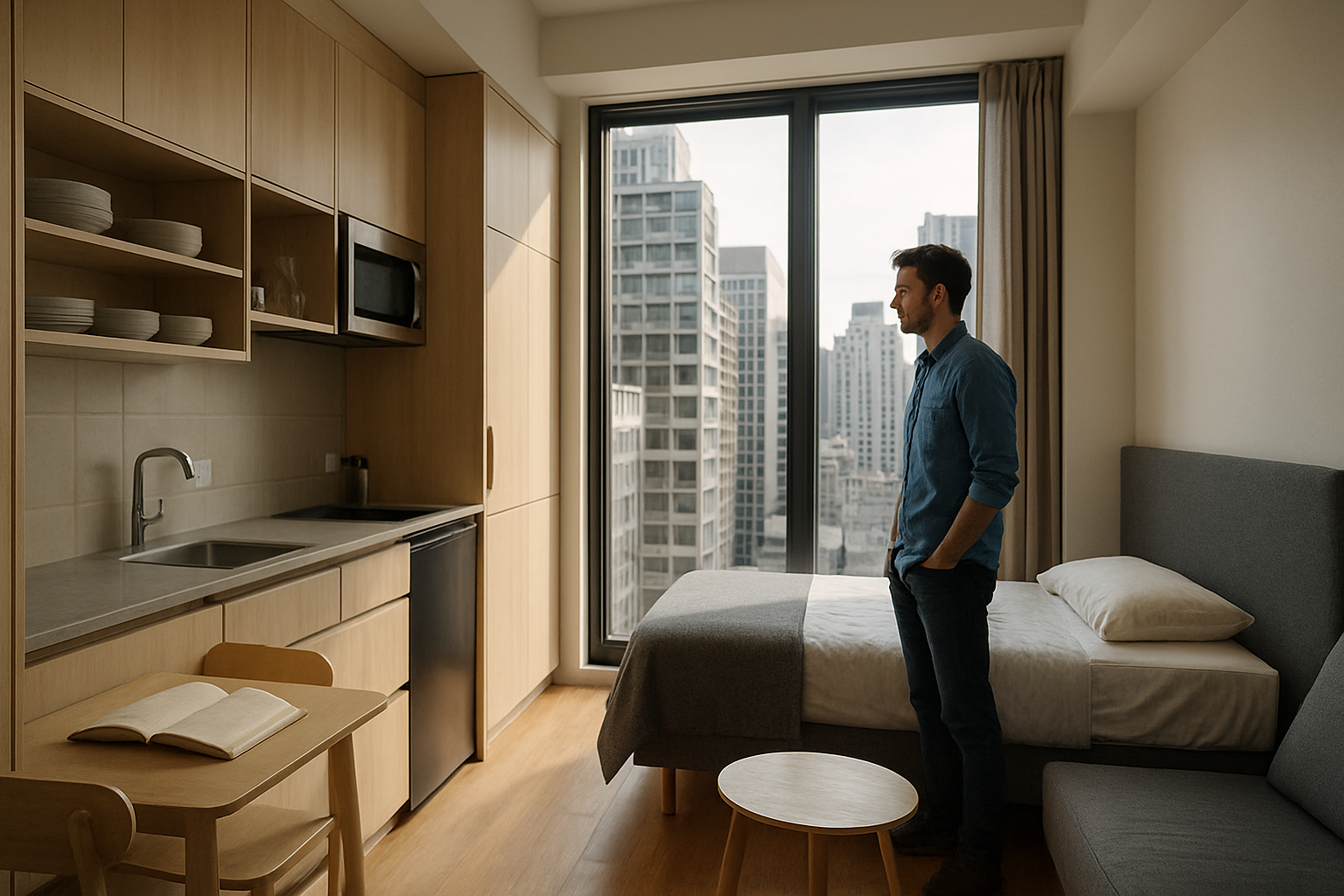Micro-Apartments: The Future of Urban Living?
In the ever-evolving landscape of real estate, a new trend is catching the eye of investors and city dwellers alike: micro-apartments. These compact living spaces, typically under 400 square feet, are reshaping urban housing markets. With skyrocketing property prices in major cities and changing lifestyle preferences, micro-apartments offer a solution that balances affordability with prime locations. But what's driving this shift, and is it sustainable?

The Rise of Micro-Living
Micro-apartments aren’t entirely new. In fact, they have roots in the single-room occupancy (SRO) hotels of the early 20th century. However, today’s micro-units are a far cry from their predecessors. Modern designs emphasize efficiency, utilizing smart storage solutions and multifunctional furniture to maximize limited square footage. The result is a space that, while small, feels surprisingly livable.
The driving forces behind the micro-apartment trend are multifaceted. Urbanization continues unabated, with the United Nations projecting that 68% of the world’s population will live in urban areas by 2050. This influx of people into cities has created a housing crunch, particularly in desirable neighborhoods close to job centers and amenities. Micro-apartments offer a way to increase housing density without requiring extensive new construction.
Economic Factors Fueling the Trend
The economic landscape plays a crucial role in the rise of micro-apartments. In many major cities, traditional housing options have become unaffordable for a large segment of the population, particularly young professionals and students. Micro-apartments provide an entry point into desirable neighborhoods at a fraction of the cost of larger units.
For investors and developers, micro-apartments can yield higher returns per square foot compared to traditional apartments. The ability to fit more units into a building footprint translates to potentially higher rental income. This economic incentive has spurred development in cities where zoning laws permit such small dwellings.
Design Innovations in Small Spaces
Architects and designers are rising to the challenge of creating functional, appealing spaces within tight constraints. The best micro-apartments employ clever design tricks to create the illusion of more space. High ceilings, large windows, and light color palettes can make a small apartment feel airy and open.
Multifunctional furniture is a key component of micro-apartment living. Murphy beds that fold into the wall, dining tables that convert to desks, and storage-packed staircases are just a few examples of the innovative solutions being implemented. Some developments even incorporate shared amenities like communal kitchens, lounges, and workspaces to complement the private units.
Regulatory Challenges and Zoning Battles
The micro-apartment trend hasn’t been without controversy. In many cities, zoning laws and building codes weren’t designed with such small living spaces in mind. Minimum square footage requirements, parking regulations, and density restrictions can pose significant hurdles for developers looking to build micro-unit projects.
Some cities have embraced the concept, adapting regulations to accommodate these new housing types. Others have been more hesitant, citing concerns about overcrowding and potential negative impacts on neighborhood character. The regulatory landscape for micro-apartments remains in flux, with ongoing debates about appropriate minimum sizes and necessary amenities.
The Social Implications of Micro-Living
Beyond the practical and economic considerations, the rise of micro-apartments raises questions about how we live and interact in urban environments. Critics argue that such small spaces could lead to social isolation or exacerbate mental health issues. Proponents counter that well-designed micro-apartments can foster a sense of community through shared spaces and encourage residents to engage more with their neighborhood.
The demographic most drawn to micro-apartments—young, single professionals—may find these units align well with their lifestyle needs. However, as residents age or start families, the limitations of micro-living become more apparent. This raises questions about the long-term viability of micro-apartments and their impact on urban demographics.
Market Outlook and Future Trends
As the micro-apartment trend continues to evolve, its future remains a topic of debate among real estate professionals. Some see it as a temporary solution to urban housing shortages, while others believe it represents a fundamental shift in housing preferences.
The COVID-19 pandemic has added another layer of complexity to the micro-apartment market. With more people working from home, the appeal of larger living spaces has increased. However, as cities reopen and the desire for urban amenities returns, micro-apartments may once again become an attractive option for those willing to trade space for location.
Looking ahead, the success of micro-apartments will likely depend on several factors: continued urbanization, housing affordability pressures, evolving lifestyle preferences, and regulatory environments. As developers refine their designs and cities grapple with housing challenges, micro-apartments may well cement their place as a significant component of the urban housing ecosystem.
In conclusion, micro-apartments represent a fascinating intersection of real estate trends, urban planning challenges, and changing lifestyles. While not without controversy, they offer a potential solution to some of the most pressing housing issues facing cities today. As the real estate market continues to evolve, the role of micro-apartments in shaping urban living will be one to watch closely.





